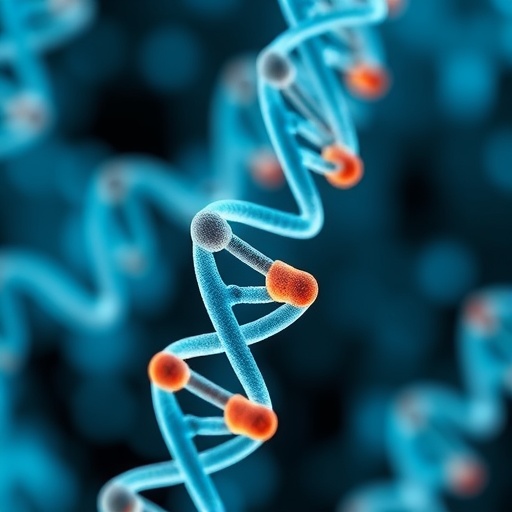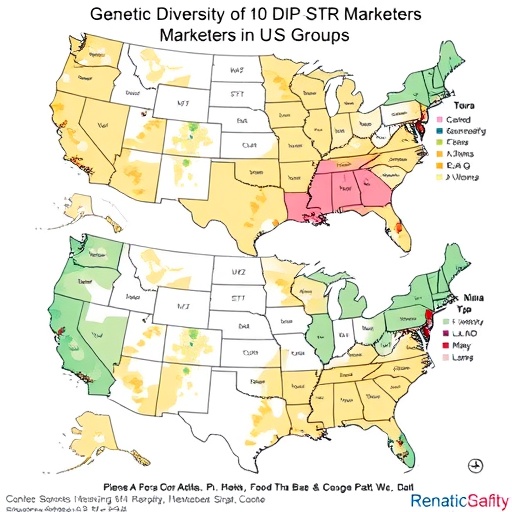In a groundbreaking advance that could revolutionize the treatment of stress urinary incontinence (SUI), researchers have unveiled an innovative injectable therapeutic system that combines neurogenesis-programmed stem cells with mechanisms to simultaneously promote muscle regeneration. This state-of-the-art approach addresses the root causes of SUI by restoring both neural integrity and muscle function within the urinary sphincter, marking a significant leap beyond the symptomatic relief offered by conventional therapies.
Stress urinary incontinence, characterized by involuntary leakage of urine during physical activities such as coughing, sneezing, or exercise, stems from multifaceted dysfunctions involving the deterioration of both muscle tissues and the underlying nerve supply. Traditional treatments, ranging from physical therapy to surgical interventions like slings, often provide limited efficacy and fail to reverse the progressive tissue damage that forms the core pathology. Consequently, the research community has eagerly sought regenerative strategies capable of restoring the structural and functional integrity of the urinary continence mechanism.
The team led by Fang, Du, Yang, and their colleagues developed an innovative injectable hydrogel-based system that houses stem cells genetically programmed toward neurogenesis, effectively priming them to develop into neuron-like cells. Intriguingly, this biological matrix simultaneously fosters an environment conducive to skeletal muscle regeneration, thereby addressing two critical components compromised in SUI patients. The integration of neurogenic and myogenic potentials into a single therapeutic platform exemplifies an unprecedented combinatorial approach to pelvic floor repair.
Technically, the injectable system comprises a biocompatible hydrogel scaffold that serves as a supportive niche for the encapsulated stem cells. These cells are preconditioned with specific transcription factors that drive their differentiation along neuronal lineages, ensuring that upon administration, they contribute to the re-establishment of local innervation. Concurrently, bioactive cues embedded within the matrix act as molecular signals stimulating resident muscle stem cells and enhancing the recruitment and proliferation of myoblasts, thereby accelerating muscle restoration.
Central to the success of this therapy is the precise orchestration of the microenvironment. The hydrogel not only provides structural support but is engineered to degrade in a controlled manner, releasing biochemical factors that sequentially modulate cellular behavior over time. This dynamic release pattern is critical to synchronizing neurogenesis and myogenesis, as premature or unsynchronized differentiation could compromise tissue integration and functionality.
In preclinical models of stress urinary incontinence, the injectable system demonstrated remarkable efficacy. Treated subjects exhibited significantly improved urethral closure pressure and reduced urinary leakage compared to controls. Histological analyses revealed substantial regeneration of both neuromuscular junctions and muscle fibers, confirming that the therapy effectively restored the anatomical substrates required for continence. These findings underscore the translational potential of this technology to human patients.
What sets this development apart is its minimally invasive administration. The hydrogel-cell composite can be delivered via injection directly into the periurethral tissue without the need for incisions or implants. This feature not only reduces surgical risks and recovery time but also broadens accessibility for patient populations who may be poor candidates for traditional surgery. Moreover, the injectable nature permits tailored dosing and repeat administrations if necessary, allowing for personalized treatment regimens.
The strategic programming of stem cells toward neurogenesis marks a pivotal shift in regenerative medicine applications for pelvic floor disorders. Given that nerve damage plays a critical role in the pathophysiology of SUI, restoring innervation is essential for reestablishing functional control over the urethral sphincter. Previous studies have struggled to simultaneously promote neural and muscular regeneration, but this platform overcomes that challenge through its dual-function design.
Beyond the robust preclinical data, the research team has addressed key safety and scalability considerations. The stem cells used are derived from allogenic sources with immunomodulatory properties, mitigating the risk of rejection and enabling off-the-shelf availability. Additionally, the fabrication process of the hydrogel and cell programming protocols are designed to comply with good manufacturing practices, setting the stage for future clinical translation.
The potential ramifications of this technology extend beyond stress urinary incontinence. The concept of co-regenerating neural and muscular tissues via injectable biomaterials and programmed stem cells opens avenues for treating a wide array of neuromuscular disorders. Conditions such as fecal incontinence, certain types of muscular dystrophy, and post-surgical nerve injuries could benefit from similar regenerative paradigms that restore complex tissue interfaces.
Critically, the study emphasizes the importance of interdisciplinary collaboration. The convergence of stem cell biology, biomaterials engineering, molecular programming, and urological expertise created a platform that not only addresses disease pathology comprehensively but also translates into real-world therapeutic potential. This synergy exemplifies how cutting-edge science can be harnessed to solve pressing clinical challenges.
As the research advances toward clinical trials, questions about long-term efficacy, integration with existing therapies, and potential unforeseen effects remain focal. However, the meticulous design and promising outcomes so far inspire optimism. Patients suffering from the debilitating symptoms of stress urinary incontinence may soon have access to a durable, restorative treatment that goes far beyond palliative care.
This injectable therapeutic system represents a paradigm shift, transforming the landscape of pelvic floor regenerative medicine. By integrating neurogenesis-promoting stem cells with muscle regeneration within a single, minimally invasive platform, researchers have charted a path toward true tissue restoration. Should future studies confirm its safety and efficacy in humans, this innovation could redefine standards of care, offering renewed hope for millions impacted by this widespread and often overlooked condition.
In conclusion, the work spearheaded by Fang and colleagues exemplifies the power of precision bioengineering combined with stem cell science to address complex physiological disorders. Their injectable system’s unique ability to promote simultaneous neural and muscular regeneration heralds a new era in therapeutic design for stress urinary incontinence and potentially many other neuromuscular diseases. The scientific community and patients alike eagerly await the next phase of clinical development for this transformative technology.
Subject of Research: Development of an injectable therapeutic system for treating stress urinary incontinence by co-promoting neurogenesis and muscle regeneration using programmed stem cells.
Article Title: Injectable therapeutic system incorporating neurogenesis-programmed stem cells concomitantly promoting muscle regeneration treats stress urinary incontinence.
Article References:
Fang, W., Du, X., Yang, R. et al. Injectable therapeutic system incorporating neurogenesis-programmed stem cells concomitantly promoting muscle regeneration treats stress urinary incontinence. Nat Commun 16, 8404 (2025). https://doi.org/10.1038/s41467-025-63421-2
Image Credits: AI Generated




